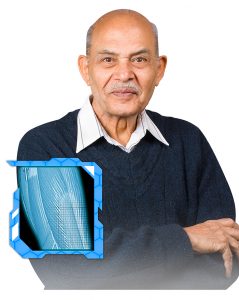Journey through Health: Muscles
Age-Related Muscle Changes
Aging is associated with a decline in muscle mass. Muscle loss can result in decreased strength. Combined muscle loss and decreased strength can affect ones’ ability to move and maintain balance, which can increase the risk of falls.
One-third of older adults experience a fall each year and falls are the leading  cause of injuries (both nonfatal and fatal) among older adults. Furthermore, many
older adults who experience a fall, even if they are not injured, develop a fear of
falling, which may cause them to limit physical activity. However, decreased physical
activity can actually result in decreased physical fitness which can further increase
the risk of falling.
cause of injuries (both nonfatal and fatal) among older adults. Furthermore, many
older adults who experience a fall, even if they are not injured, develop a fear of
falling, which may cause them to limit physical activity. However, decreased physical
activity can actually result in decreased physical fitness which can further increase
the risk of falling.
Muscle also contains a large amount of water. In fact, about 75% of muscle is water. Therefore, muscle loss also results in a loss of body water. This is a problem because total body water decreases with age, resulting in a smaller margin of safety against additional body water loss.
Diet, Physical Activity and Muscle Health
Calories and protein.
Inadequate calories and protein are associated with muscle loss. However, with age, calorie needs decline while the need for most nutrients remains relatively unchanged. This places an emphasis on choosing nutrient dense foods in order to meet nutrient needs within an appropriate calorie level.
Muscle-strengthening activity.
Regular physical activity, particularly muscle-strengthening activity, is essential for preserving and building muscle mass. Because muscle contains more water than fat, building muscle can also help to maintain body water.
The following physical activity guidelines are the same for adults and older adults:
- All adults should avoid inactivity. Some physical activity is better than none, and adults who participate in any amount of physical activity gain some health benefits.
- For substantial health benefits, adults should do at least 150 to 300 minutes of moderate-intensity physical activity a week, or 75 to 150 minutes of vigorous-intensity physical activity, or an equivalent combination of mode3rate and vigorous-intensity physical activity
- Adults should also do muscle-strengthening activities that are moderate or high intensity and involve all major muscle groups on two or more days a week, as these activities provide additional health benefits.
The following physical activity guidelines are just for older adults:
- When older adults cannot meet the adult guidelines, they should be as physically active as their abilities and conditions will allow.
- Older adults should do exercises that maintain or improve balance if they are at risk of falling.
- Examples include backward walking, sideways walking, heel walking, toe walking, standing from a sitting position, and Tai chi exercises.
- Older adults should determine their level of effort or physical activity relative to their level of fitness.
- Older adults with chronic conditions should understand whether and how their conditions affect their ability to do regular physical activity safely.
MyPlate Messages Promoting Muscle Health
Several of the MyPlate messages can help promote muscle health.
Build a Healthy Plate
- Vary your protein choices.
Eat the Right Amount of Calories for You
- Consume adequate but not excessive calories
Be Physically Active Your Way
- At least 150 to 300 minutes of moderate-intensity physical activity a week, or 75
to 150 minutes of vigorous-intensity physical activity, or an equivalent combination
of moderate and vigorous-intensity physical activity.
- If you cannot meet this guideline, be as physically active as your abilities and conditions will allow.
- Include muscle-strengthening activities that involve all major muscle groups on two or more days a week.
- Do exercises that maintain or improve balance if you are at risk of falling.
Sources
Bernstein M, Luggen A.S. Nutrition for the Older Adult. Sudbury, MA: Jones and Bartlett publishers; 2010.
Brown JE. Nutrition in Older Adults. In: Nutrition Through the Life Cycle 4th ed. Belmont, CA: Wadsworth, Cengage Learning; 2011.
CDC. (2010). Falls Among Older Adults: An Overview. Retrieved Aug,2011 http://www.cdc.gov/homeandrecreationalsafety/falls/adultfalls.html
David R, T. (2007). Loss of skeletal muscle mass in aging: Examining the relationship of starvation, sarcopenia and cachexia. Clinical Nutrition, 26(4), 389-399. doi: 10.1016/j.clnu.2007.03.008
Rolfes SR, Pinna K, Whitney E. Understanding Normal and Clinical Nutrition, 7th ed. Thomson/Wadsworth Publishing Co., Belmont, CA., 2008.
U.S. Department of Agriculture and U.S. Department of Health and Human Services. Let’s eat for the health of it. 2011. Accessed at: http://www.cnpp.usda.gov/DietaryGuidelines.htm
United States Department of Agriculture. Dietary Guidelines for Americans 2020-2025.
United States Department of Agriculture. ChooseMyPlate.gov. Accessed at www.choosemyplate.gov
United States Department of Health and Human Services. 2018. Physical Activity Guidelines for Americans. 2nd ed.
Vellas, B. J., Wayne, S. J., Romero, L. J., Baumgartner, R. N., & Garry, P. J. (1997). Fear of falling and restriction of mobility in elderly fallers. Age and Ageing 26, 189-193.
